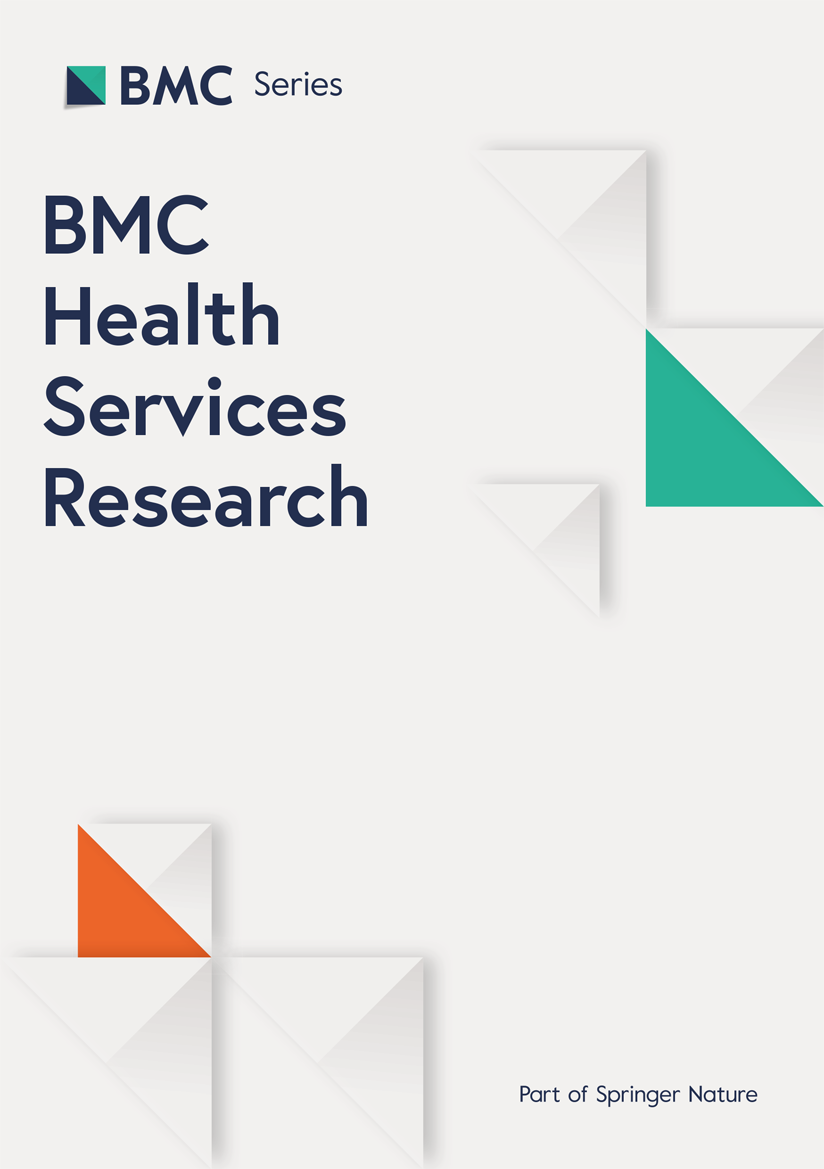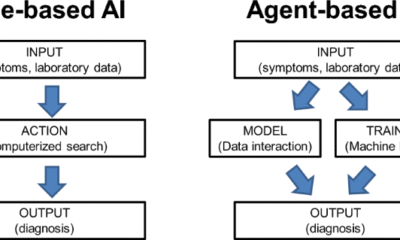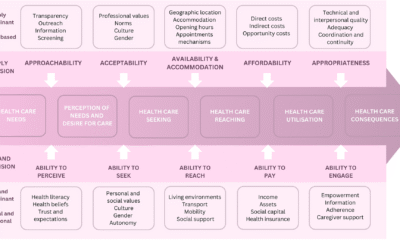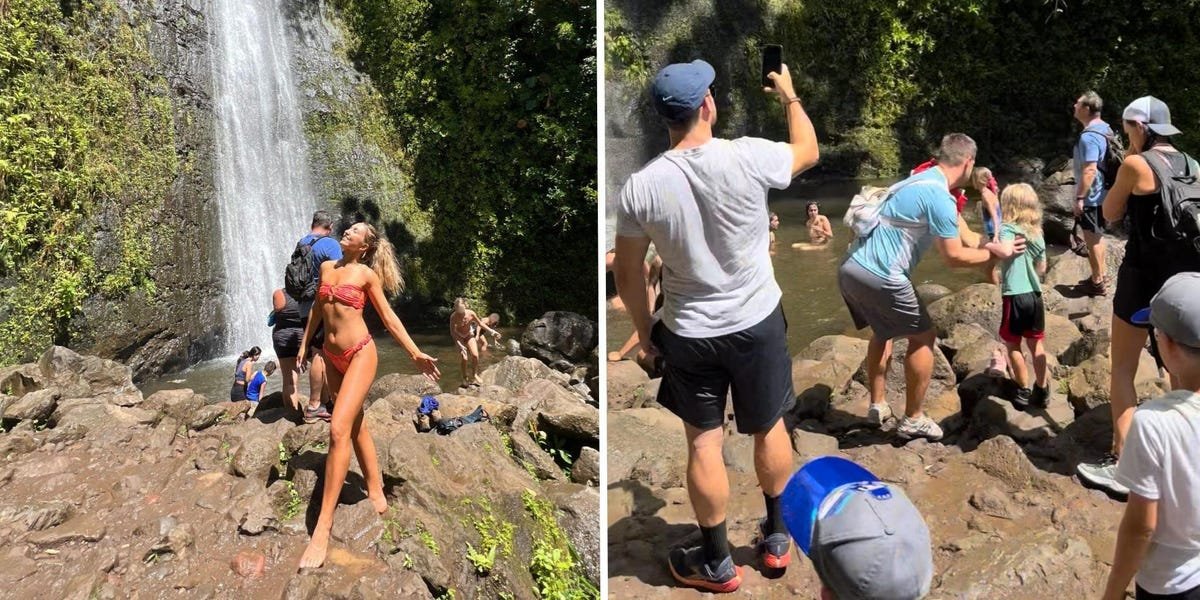Riley WJ. Health Disparities: Gaps in Access, Quality and Affordability of Medical Care. Trans Am Clin Climatol Assoc. 2012;123:167–74.
PubMed
PubMed Central
Google Scholar
Levesque J, Harris MF, Russell G. Patient-centred access to health care: conceptualising access at the interface of health systems and populations. Int J Equity Health. 2013;12:18. https://doi.org/10.1186/1475-9276-12-18.
Article
PubMed
PubMed Central
Google Scholar
Serban N. A Multidimensional Framework for Measuring Access. In: Serban N. Healthcare System Access: Measurement, Inference, and Intervention. New Jersey: John Wiley & Sons; 2019. p. 13–59.
Google Scholar
Roncarolo F, Boivin A, Denis JL, et al. What do we know about the needs and challenges of health systems? A scoping review of the international literature. BMC Health Serv Res. 2017;17:636. https://doi.org/10.1186/s12913-017-2585-5.
Article
PubMed
PubMed Central
Google Scholar
Cabrera-Barona P, Blaschke T. Kienberger S. Explaining Accessibility and Satisfaction Related to Healthcare: A Mixed-Methods Approach. Soc Indic Res. 2017;133,719–739. https://doi.org/10.1007/s11205-016-1371-9.
Coombs NC, Meriwether WE, Caringi J, Newcomer SR. Barriers to healthcare access among U.S. adults with mental health challenges: A population-based study. SSM Popul Health. 2021;15:100847. https://doi.org/10.1016/j.ssmph.2021.100847.
Farietta TP, Lu B, Tumin R. Ohio’s Medicaid Expansion and Unmet Health Needs Among Low-Income Women of Reproductive Age. Matern Child Health. 2018;22(12):1771–9. https://doi.org/10.1007/s10995-018-2575-1.
Article
Google Scholar
Sommers BD, Blendon RJ, Orav EJ, Epstein AM. Changes in Utilization and Health Among Low-Income Adults After Medicaid Expansion or Expanded Private Insurance. JAMA Intern Med. 2016;1;176(10):1501–1509. https://doi.org/10.1001/jamainternmed.2016.4419.
National Alliance on Mental Illness: The Doctor is Out. Continuing Disparities in Access to Mental and Physical Health Care. 2017. https://www.nami.org/Support-Education/Publications-Reports/Public-Policy-Reports/The-Doctor-is-Out. Accessed 29 Aug 2021.
Pollitz K, Lopes L, Kearney A, Rae M, Cox C, Fehr F, Rousseau D, Kaiser Family Foundation. US Statistics on Surprise Medical Billing. JAMA. 2020;323(6):498. https://doi.org/10.1001/jama.2020.0065.
Kahraman C, Orobello C, Cirella GT. hanging Dynamics with COVID-19: Future Outlook. In: XX Cirella GT, editor. Human Settlements: Urbanization, Smart Sector Development, and Future Outlook. Singapore: Springer; 2022. p. 235–52.
Book
Google Scholar
Blumenthal D, Fowler EJ, Abrams M, Collins SR. Covid-19 — Implications for the Health Care System. N Engl J Med. 2020;383(15):1483–8. https://doi.org/10.1056/NEJMsb2021088.
Article
CAS
PubMed
Google Scholar
Defêche J, Azarzar S, Mesdagh A, Dellot P, Tytgat A, Bureau F, Gillet L, Belhadj Y, Bontems S, Hayette M-P, Schils R, Rahmouni S, Ernst M, Moutschen M, Darcis G. In-Depth Longitudinal Comparison of Clinical Specimens to Detect SARS-CoV-2. Pathogens. 2021;10(11):1362. https://doi.org/10.3390/pathogens10111362.
Article
CAS
PubMed
PubMed Central
Google Scholar
Rosenblatt RA, Hart LG. Physicians and rural America. West J Med. 2000;173(5):348–51. https://doi.org/10.1136/ewjm.173.5.348.
Article
CAS
PubMed
PubMed Central
Google Scholar
Kaiser Family Foundation Analysis of OECD Data. 2020. https://www.healthsystemtracker.org/chart-collection/u-s-health-care-resources-compare-countries/#item-physicians-density-per-1000-population-2000-2018. Accessed 31 Oct 2021.
Government Accounting Office. Physician Workforce: Locations and Types of Graduate Training Were Largely Unchanged, and Federal Efforts May Not Be Sufficient to Meet Needs. 2017. https://www.gao.gov/assets/gao-17-411.pdf. Accessed 31 Oct 2021.
The Kaiser Family Foundation: The Uninsured in Rural America. 2003. https://www.kff.org/wp-content/uploads/2013/01/the-uninsured-in-rural-america-update-pdf.pdf. Accessed 15 Sept 2021.
Wright B, Potter AJ, Trivedi AN, Mueller KJ. The Relationship Between Rural Health Clinic Use and Potentially Preventable Hospitalizations and Emergency Department Visits Among Medicare Beneficiaries. J Rural Health. 2018;34(4):423–30. https://doi.org/10.1111/jrh.12253.
Article
PubMed
Google Scholar
Weichelt B, Bendixsen C, Patrick T. A Model for Assessing Necessary Conditions for Rural Health Care’s Mobile Health Readiness: Qualitative Assessment of Clinician-Perceived Barriers. JMIR Mhealth Uhealth. 2019;7(11): e11915. https://doi.org/10.2196/11915.
Article
PubMed
PubMed Central
Google Scholar
Mangundu M, Roets L, Janse van Rensberg E. Accessibility of healthcare in rural Zimbabwe: The perspective of nurses and healthcare users. Afr J Prim Health Care Fam Med. 2020;12(1):e1-e7. https://doi.org/10.4102/phcfm.v12i1.2245.
Rahayu YYS, Araki T, Rosleine D. Factors affecting the use of herbal medicines in the universal health coverage system in Indonesia. J Ethnopharmacol. 2020;260: 112974. https://doi.org/10.1016/j.jep.2020.112974.
Article
CAS
PubMed
Google Scholar
Bolin JN, Bellamy GR, Ferdinand AO, et al. Rural Healthy People 2020: New Decade, Same Challenges. Journal of Rural Health. 2015;31(3):326–33.
Article
Google Scholar
Reid S. The rural determinants of health: using critical realism as a theoretical framework. Rural Remote Health. 2019;19(3):5184. https://doi.org/10.22605/RRH5184.
Article
PubMed
Google Scholar
Wynia MK, Osborn CY. Health literacy and communication quality in health care organizations. J Health Commun. 2010;15 Suppl 2(Suppl 2):102–115. https://doi.org/10.1080/10810730.2010.499981.
Centers for Disease Control and Prevention. What is Health Literacy? 2022. https://www.cdc.gov/healthliteracy/learn/index.html. Accessed 25 Feb 2022.
Davis TC, Arnold CL, Rademaker A, et al. Differences in barriers to mammography between rural and urban women. J Womens Health (Larchmt). 2012;21(7):748–55. https://doi.org/10.1089/jwh.2011.3397.
Article
Google Scholar
Halverson J, Martinez-Donate A, Trentham-Dietz A, et al. Health literacy and urbanicity among cancer patients. J Rural Health. 2013;29(4):392–402. https://doi.org/10.1111/jrh.12018.
Article
PubMed
PubMed Central
Google Scholar
Zahnd WE, Scaife SL, Francis ML. Health literacy skills in rural and urban populations. Am J Health Behav. 2009;33(5):550–7. https://doi.org/10.5993/ajhb.33.5.8.
Article
PubMed
Google Scholar
Dogba MJ, Dossa AR, Breton E, Gandonou-Migan R. Using information and communication technologies to involve patients and the public in health education in rural and remote areas: a scoping review. BMC Health Serv Res. 2019;19(1):128. https://doi.org/10.1186/s12913-019-3906-7.
Article
PubMed
PubMed Central
Google Scholar
Committee on the Science of Changing Behavioral Health Social Norms, Board on Behavioral, Cognitive, and Sensory Sciences, Division of Behavioral and Social Sciences and Education; National Academies of Sciences, Engineering, and Medicine. In: Ending Discrimination Against People with Mental and Substance Use Disorders: The Evidence for Stigma Change. Washington: National Academics Press; 2016. p. 33–52.
Book
Google Scholar
Wu Y, Zhou H, Wang Q, Cao M, Medina A, Rozelle S. Use of maternal health services among women in the ethnic rural areas of western China. BMC Health Serv Res. 2019;19(1):179. https://doi.org/10.1186/s12913-019-3996-2.
Article
PubMed
PubMed Central
Google Scholar
Meyer E, Hennink M, Rochat R, et al. Working Towards Safe Motherhood: Delays and Barriers to Prenatal Care for Women in Rural and Peri-Urban Areas of Georgia. Matern Child Health J. 2016;20(7):1358–65. https://doi.org/10.1007/s10995-016-1997-x.
Article
PubMed
Google Scholar
Heinrich S. Medical science faces the post-truth era: a plea for the grassroot values of science. Curr Opin Anaesthesiol. 2020;33(2):198–202. https://doi.org/10.1097/ACO.0000000000000833.
Article
PubMed
Google Scholar
Esquivel MM, Chen JC, Woo RK, et al. Why do patients receive care from a short-term medical mission? Survey study from rural Guatemala. J Surg Res. 2017;215:160–6. https://doi.org/10.1016/j.jss.2017.03.056.
Article
PubMed
Google Scholar
Park LG, Dracup K, Whooley MA, et al. Symptom Diary Use and Improved Survival for Patients With Heart Failure [published correction appears in Circ Heart Fail. 2017 Dec;10(12):]. Circ Heart Fail. 2017;10(11):e003874. https://doi.org/10.1161/CIRCHEARTFAILURE.117.003874.
Taleb F, Perkins J, Ali NA, et al. Transforming maternal and newborn health social norms and practices to increase utilization of health services in rural Bangladesh: a qualitative review. BMC Pregnancy Childbirth. 2015;15:75. https://doi.org/10.1186/s12884-015-0501-8.
Article
PubMed
PubMed Central
Google Scholar
Billah SM, Hoque DE, Rahman M, et al. Feasibility of engaging “Village Doctors” in the Community-based Integrated Management of Childhood Illness (C-IMCI): experience from rural Bangladesh. J Glob Health. 2018;8(2): 020413. https://doi.org/10.7189/jogh.08.020413.
Article
PubMed
PubMed Central
Google Scholar
Kaiser JL, Fong RM, Hamer DH, et al. How a woman’s interpersonal relationships can delay care-seeking and access during the maternity period in rural Zambia: An intersection of the Social Ecological Model with the Three Delays Framework. Soc Sci Med. 2019;220:312–21. https://doi.org/10.1016/j.socscimed.2018.11.011.
Article
PubMed
PubMed Central
Google Scholar
Rao KD, Sheffel A. Quality of clinical care and bypassing of primary health centers in India. Soc Sci Med. 2018;207:80–8. https://doi.org/10.1016/j.socscimed.2018.04.040.
Article
PubMed
Google Scholar
Lee YT, Lee YH, Kaplan WA. Is Taiwan’s National Health Insurance a perfect system? Problems related to health care utilization of the aboriginal population in rural townships. Int J Health Plann Manage. 2019;34(1):e6–10. https://doi.org/10.1002/hpm.2653.
Article
PubMed
Google Scholar
Lyford M, Haigh MM, Baxi S, Cheetham S, Shahid S, Thompson SC. An Exploration of Underrepresentation of Aboriginal Cancer Patients Attending a Regional Radiotherapy Service in Western Australia. Int J Environ Res Public Health. 2018;15(2):337. https://doi.org/10.3390/ijerph15020337.
Article
PubMed Central
Google Scholar
Rohr JM, Spears KL, Geske J, Khandalavala B, Lacey MJ. Utilization of Health Care Resources by the Amish of a Rural County in Nebraska. J Community Health. 2019;44(6):1090–7. https://doi.org/10.1007/s10900-019-00696-9.
Article
PubMed
Google Scholar
Johnston K, Harvey C, Matich P, et al. Increasing access to sexual health care for rural and regional young people: Similarities and differences in the views of young people and service providers. Aust J Rural Health. 2015;23(5):257–64. https://doi.org/10.1111/ajr.12186.
Article
PubMed
Google Scholar
Legido-Quigley H, Naheed A, de Silva HA, et al. Patients’ experiences on accessing health care services for management of hypertension in rural Bangladesh, Pakistan and Sri Lanka: A qualitative study. PLoS ONE. 2019;14(1): e0211100. https://doi.org/10.1371/journal.pone.0211100.
Article
CAS
PubMed
PubMed Central
Google Scholar
Shaw B, Amouzou A, Miller NP, Bryce J, Surkan PJ. A qualitative exploration of care-seeking pathways for sick children in the rural Oromia region of Ethiopia. BMC Health Serv Res. 2017;17(1):184. https://doi.org/10.1186/s12913-017-2123-5.
Article
PubMed
PubMed Central
Google Scholar
Larson E, Vail D, Mbaruku GM, Kimweri A, Freedman LP, Kruk ME. Moving Toward Patient-Centered Care in Africa: A Discrete Choice Experiment of Preferences for Delivery Care among 3,003 Tanzanian Women. PLoS ONE. 2015;10(8): e0135621. https://doi.org/10.1371/journal.pone.0135621.
Article
CAS
PubMed
PubMed Central
Google Scholar
Spleen AM, Lengerich EJ, Camacho FT, Vanderpool RC. Health care avoidance among rural populations: results from a nationally representative survey. J Rural Health. 2014;30(1):79–88. https://doi.org/10.1111/jrh.12032.
Article
PubMed
Google Scholar
Weisgrau S. Issues in rural health: access, hospitals, and reform. Health Care Financ Rev. 1995;17(1):1–14.
CAS
PubMed
PubMed Central
Google Scholar
National Center for Health Statistics. 2018. https://www.cdc.gov/nchs/surveys.htm. Accessed 29 Aug 2021.
Sekhon M, Cartwright M, Francis JJ. Acceptability of healthcare interventions: an overview of reviews and development of a theoretical framework. BMC Health Serv Res. 2017;17(1):88. https://doi.org/10.1186/s12913-017-2031-8.
Article
PubMed
PubMed Central
Google Scholar
Dyer TA, Owens J, Robinson PG. The acceptability of healthcare: from satisfaction to trust. Community Dent Health. 2016;33(4):242–51. https://doi.org/10.1922/CDH_3902Dyer10.
Article
CAS
PubMed
Google Scholar
Padgett DK. Qualitative and Mixed Methods in Public Health. Thousand Oaks, California: SAGE Publications Inc.; 2012.
Book
Google Scholar
Tolley EE, Ulin PR, Mack N, Robinson ET, Succop SM. Qualitative Methods in Public Health: A Field Guide for Applied Research. 2nd ed. San Francisco, California: John Wiley & Sons, Inc.; 2016.
Google Scholar
Ingram DD, Franco SJ. 2013 NCHS urban-rural classification scheme for counties. In: National Center for Health Statistics: Vital Health Statistics. 2014. https://www.cdc.gov/nchs/data/series/sr_02/sr02_166.pdf. Accessed 31 Oct 2021.
Health Resources & Services Administration. Health Professional Shortage Area Find. 2021. https://data.hrsa.gov/tools/shortage-area/hpsa-find. Accessed 31 Oct 2021.
Shaghaghi A, Bhopal RS, Sheikh A. Approaches to Recruiting “Hard-To-Reach” Populations into Re-search: A Review of the Literature. Health Promot Perspect. 2011;1(2):86–94. https://doi.org/10.5681/hpp.2011.009.
Article
PubMed
PubMed Central
Google Scholar
Sadler GR, Lee HC, Lim RS, Fullerton J. Recruitment of hard-to-reach population subgroups via adaptations of the snowball sampling strategy. Nurs Health Sci. 2010;12(3):369–74. https://doi.org/10.1111/j.1442-2018.2010.00541.x.
Article
PubMed
PubMed Central
Google Scholar
Deterding NM, Waters MC. Flexible Coding of In-depth Interviews: A Twenty-first-century Approach. Sociological Methods & Research. 2021;50(2):708–39. https://doi.org/10.1177/0049124118799377.
Article
Google Scholar
Schreier M, Stamann C, Janssen M, Dahl T, Whittal A. Qualitative Content Analysis: Conceptualizations and Challenges in Research Practice-Introduction to the FQS Special Issue” Qualitative Content Analysis I”. InForum Qualitative Sozialforschung/Forum: Qualitative Social Research. 2019;20:26 DEU.
Google Scholar
Guest G, Namey E, Chen M. A simple method to assess and report thematic saturation in qualitative research. PLoS ONE. 2020;15(5): e0232076. https://doi.org/10.1371/journal.pone.0232076.
Article
CAS
PubMed
PubMed Central
Google Scholar
Mayring P. Qualitative Content Analysis. Forum Qualitative Sozialforschung/Forum: Qualitative Social Research. 2000;1(2). https://doi.org/10.17169/fqs-1.2.1089.
O’Brien BC, Harris IB, Beckman TJ, Reed DA, Cook DA. Standards for reporting qualitative research: a synthesis of recommendations. Academic Medicine, Vol. 89, No. 9 / Sept 2014. https://doi.org/10.1097/ACM.0000000000000388.
Carter N, Bryant-Lukosius D, DiCenso A, Blythe J, Neville AJ. The use of triangulation in qualitative research. Oncol Nurs Forum. 2014;41(5):545–7. https://doi.org/10.1188/14.ONF.545-547.
Article
PubMed
Google Scholar
Miller S. Cultural humility is the first step to becoming global care providers. J Obstet Gynecol Neonatal Nurs. 2009;38(1):92–3. https://doi.org/10.1111/j.1552-6909.2008.00311.x.
Article
PubMed
Google Scholar
Prasad SJ, Nair P, Gadhvi K, Barai I, Danish HS, Philip AB. Cultural humility: treating the patient, not the illness. Med Educ Online. 2016;21:30908. https://doi.org/10.3402/meo.v21.30908.
Article
PubMed
Google Scholar
George MS, Davey R, Mohanty I, Upton P. “Everything is provided free, but they are still hesitant to access healthcare services”: why does the indigenous community in Attapadi, Kerala continue to experience poor access to healthcare? Int J Equity Health. 2020;19(1):105. https://doi.org/10.1186/s12939-020-01216-1.
Article
PubMed
PubMed Central
Google Scholar
Romanelli M, Hudson KD. Individual and systemic barriers to health care: Perspectives of lesbian, gay, bisexual, and transgender adults. Am J Orthopsychiatry. 2017;87(6):714–28. https://doi.org/10.1037/ort0000306.
Article
PubMed
Google Scholar
Bailie J, Schierhout G, Laycock A, et al. Determinants of access to chronic illness care: a mixed-methods evaluation of a national multifaceted chronic disease package for Indigenous Australians. BMJ Open. 2015;5(11): e008103. https://doi.org/10.1136/bmjopen-2015-008103.
Article
PubMed
PubMed Central
Google Scholar
Reeve C, Humphreys J, Wakerman J, Carter M, Carroll V, Reeve D. Strengthening primary health care: achieving health gains in a remote region of Australia. Med J Aust. 2015;202(9):483–7. https://doi.org/10.5694/mja14.00894.
Article
PubMed
Google Scholar
Swan LET, Auerbach SL, Ely GE, Agbemenu K, Mencia J, Araf NR. Family Planning Practices in Appalachia: Focus Group Perspectives on Service Needs in the Context of Regional Substance Abuse. Int J Environ Res Public Health. 2020;17(4):1198. https://doi.org/10.3390/ijerph17041198.
Article
PubMed Central
Google Scholar
Kabia E, Mbau R, Oyando R, et al. “We are called the et cetera”: experiences of the poor with health financing reforms that target them in Kenya. Int J Equity Health. 2019;18(1):98. https://doi.org/10.1186/s12939-019-1006-2.
Article
PubMed
PubMed Central
Google Scholar
Ho JW, Kuluski K, Im J. “It’s a fight to get anything you need” – Accessing care in the community from the perspectives of people with multimorbidity. Health Expect. 2017;20(6):1311–9. https://doi.org/10.1111/hex.12571.
Article
PubMed
PubMed Central
Google Scholar
Latif A, Mandane B, Ali A, Ghumra S, Gulzar N. A Qualitative Exploration to Understand Access to Pharmacy Medication Reviews: Views from Marginalized Patient Groups. Pharmacy (Basel). 2020;8(2):73. https://doi.org/10.3390/pharmacy8020073.
Article
Google Scholar
Tschirhart N, Diaz E, Ottersen T. Accessing public healthcare in Oslo, Norway: the experiences of Thai immigrant masseuses. BMC Health Serv Res. 2019;19(1):722. https://doi.org/10.1186/s12913-019-4560-9.
Article
PubMed
PubMed Central
Google Scholar
Ireland S, Belton S, Doran F. “I didn’t feel judged”: exploring women’s access to telemedicine abortion in rural Australia. J Prim Health Care. 2020;12(1):49–56. https://doi.org/10.1071/HC19050.
Article
PubMed
Google Scholar
Stokes T, Tumilty E, Latu ATF, et al. Improving access to health care for people with severe chronic obstructive pulmonary disease (COPD) in Southern New Zealand: qualitative study of the views of health professional stakeholders and patients. BMJ Open. 2019;9(11): e033524. https://doi.org/10.1136/bmjopen-2019-033524.
Article
PubMed
PubMed Central
Google Scholar
Jafar TH, Ramakrishnan C, John O, et al. Access to CKD Care in Rural Communities of India: a qualitative study exploring the barriers and potential facilitators. BMC Nephrol. 2020;21(1):26. https://doi.org/10.1186/s12882-020-1702-6.
Article
PubMed
PubMed Central
Google Scholar
Doetsch J, Pilot E, Santana P, Krafft T. Potential barriers in healthcare access of the elderly population influenced by the economic crisis and the troika agreement: a qualitative case study in Lisbon, Portugal. Int J Equity Health. 2017;16(1):184. https://doi.org/10.1186/s12939-017-0679-7.
Article
PubMed
PubMed Central
Google Scholar
Engel GL. The need for a new medical model: a challenge for biomedicine. Science. 1977;196(4286):129–36. https://doi.org/10.1126/science.847460.
Article
CAS
PubMed
Google Scholar
Risberg G, Hamberg K, Johansson E.E. Gender perspective in medicine: a vital part of medical scientific rationality. A useful model for comprehending structures and hierarchies within medical science. BMC Med. 2006;4(1):1.
Article
Google Scholar
Montana Census & Economic Information Center. 2021. https://ceic.mt.gov/. Accessed 18 Sept 2021.
Smith M, Saunders R, Stuckhardt L, McGinnis JM, Committee on the Learning Health Care System in America, Institute of Medicine. Best Care at Lower Cost: The Path to Continuously Learning Health Care in America. Washington: National Academies Press; 2013.
Google Scholar
O’Daniel M, Rosenstein AH, Professional Communication and Team Collaboration. In: Hughes RG, editor. Chapter 33: Patient Safety and Quality: An Evidence-Based Handbook for Nurses. Agency for Healthcare Research and Quality: Rockville; 2008.
Google Scholar
Evans RS. Electronic Health Records: Then, Now, and in the Future. Yearb Med Inform. 2016;Suppl 1(Suppl 1):S48-S61. https://doi.org/10.15265/IYS-2016-s006.
Tikkanen R, Osborn R, Mossialos E, Djordjevic A, Wharton GA. International Health Care System Profiles: United States. The Commonwealth Fund. 2020. https://www.commonwealthfund.org/international-health-policy-center/countries/united-states. Accessed 19 Sept 2021.
Berchick ER, Barnett JC, Upton RD. Health Insurance Coverage in the United States. Washington: United States Census Bureau; 2018.
Google Scholar
Brock DW, Buchanan A. Ethical Issues in For-Profit Health Care. In: Gray BH, editor. For-Profit Enterprise in Health Care. Washington: National Academics Press; 1986.
Google Scholar
Lekas HM, Pahl K, Fuller Lewis C. Rethinking Cultural Competence: Shifting to Cultural Humility. Health Serv Insights. 2020;13:1178632920970580. https://doi.org/10.1177/1178632920970580.
Beaulieu MD. Primary and secondary care: Breaking down barriers for our patients with chronic diseases. Can Fam Physician. 2013;59(2):221.
PubMed
PubMed Central
Google Scholar
Crafford L, Jenkins LS. Why seek a second consultation at an emergency centre? A qualitative study. Afr J Prim Health Care Fam Med. 2017;9(1):e1–8. https://doi.org/10.4102/phcfm.v9i1.1397.
Article
PubMed
Google Scholar
Sorensen MJ, von Recklinghausen FM, Fulton G, et al. Secondary overtriage: The burden of unnecessary interfacility transfers in a rural trauma system. JAMA Surg. 2013;148:763–8.
Article
PubMed
Google Scholar
Sutcliffe CG, Thuma PE, van Dijk JH, et al. Use of mobile phones and text messaging to decrease the turnaround time for early infant HIV diagnosis and notification in rural Zambia: an observational study. BMC Pediatr. 2017;17(1):66. https://doi.org/10.1186/s12887-017-0822-z.
Article
PubMed
PubMed Central
Google Scholar
Baldwin LM, Morrison C, Griffin J, et al. Bidirectional Text Messaging to Improve Adherence to Recommended Lipid Testing. J Am Board Fam Med. 2017;30(5):608–14. https://doi.org/10.3122/jabfm.2017.05.170088.
Article
PubMed
Google Scholar
Albright K, Krantz MJ, Backlund Jarquín P, DeAlleaume L, Coronel-Mockler S, Estacio RO. Health Promotion Text Messaging Preferences and Acceptability Among the Medically Underserved. Health Promot Pract. 2015;16(4):523–32. https://doi.org/10.1177/1524839914566850.
Article
PubMed
Google Scholar
Cramer ME, Mollard EK, Ford AL, Kupzyk KA, Wilson FA. The feasibility and promise of mobile technology with community health worker reinforcement to reduce rural preterm birth. Public Health Nurs. 2018;35(6):508–16. https://doi.org/10.1111/phn.12543.
Article
PubMed
Google Scholar
Gbadamosi SO, Eze C, Olawepo JO, et al. A Patient-Held Smartcard With a Unique Identifier and an mHealth Platform to Improve the Availability of Prenatal Test Results in Rural Nigeria: Demonstration Study. J Med Internet Res. 2018;20(1): e18. https://doi.org/10.2196/jmir.8716.
Article
PubMed
PubMed Central
Google Scholar
Trondsen MV, Tjora A, Broom A, Scambler G. The symbolic affordances of a video-mediated gaze in emergency psychiatry. Soc Sci Med. 2018;197:87–94. https://doi.org/10.1016/j.socscimed.2017.11.056.
Article
PubMed
Google Scholar
Schwitters A, Lederer P, Zilversmit L, et al. Barriers to health care in rural Mozambique: a rapid ethnographic assessment of planned mobile health clinics for ART. Glob Health Sci Pract. 2015;3(1):109–16. https://doi.org/10.9745/GHSP-D-14-00145.
Article
PubMed
PubMed Central
Google Scholar
Kojima N, Krupp K, Ravi K, et al. Implementing and sustaining a mobile medical clinic for prenatal care and sexually transmitted infection prevention in rural Mysore, India. BMC Infect Dis. 2017;17(1):189. https://doi.org/10.1186/s12879-017-2282-3.
Article
PubMed
PubMed Central
Google Scholar
Gorman SE, Martinez JM, Olson J. An assessment of HIV treatment outcomes among utilizers of semi-mobile clinics in rural Kenya. AIDS Care. 2015;27(5):665–8. https://doi.org/10.1080/09540121.2014.986053.
Article
PubMed
Google Scholar
Lee S, Black D, Held ML. Factors Associated with Telehealth Service Utilization among Rural Populations. J Health Care Poor Underserved. 2019;30(4):1259–72. https://doi.org/10.1353/hpu.2019.0104.
Article
PubMed
Google Scholar
Agha Z, Schapira RM, Maker AH. Cost effectiveness of telemedicine for the delivery of outpatient pulmonary care to a rural population. Telemed J E Health. 2002;8(3):281–91. https://doi.org/10.1089/15305620260353171.
Article
PubMed
Google Scholar
Doraiswamy S, Abraham A, Mamtani R, Cheema S. Use of Telehealth During the COVID-19 Pandemic: Scoping Review. J Med Internet Res. 2020;22(12): e24087. https://doi.org/10.2196/24087.
Article
PubMed
PubMed Central
Google Scholar




































